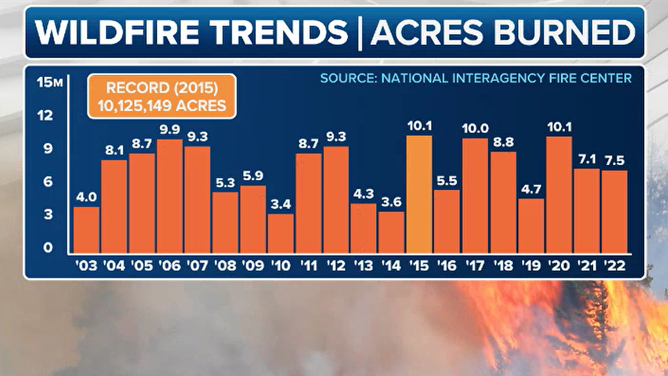Lightning sparks Alaska’s largest wildfire of year
The U.S. National Park Service says Alaska’s typical wildfire season begins in May and ends in late July. None of the 19 boroughs that make up the Last Frontier are dealing with drought conditions. Ample amounts of precipitation during the winter and spring have the state sitting pretty with no significant drought concerns.
McDonald Fire burns south of Fairbanks, Alaska
The McDonald Fire south of Fairbanks, Alaska was reported to have burned more than 28,000 acres since its inception on June 8.
FAIRBANKS, Alaska – Officials believe lightning is to blame for sparking Alaska’s largest fire of the year in what otherwise has been a down season for wildfire activity.
The Bureau of Land Management Alaska Fire Service reports the McDonald Fire has burned more than 32,000 acres of wilderness south of Fairbanks, the state’s second-largest city.
The agency said the blaze started Saturday and is burning in what is known as the Tanana Flats Training Area, which is used by the U.S. military for live-fire drills and other training activities.
Four dozen firefighters and support personnel have been assigned to the fire, which crews are allowing to naturally burn due to its remoteness.

Map of the McDonald Fire in Alaska
(Bureau of Land Management Alaska Fire Service / FOX Weather)
Firefighters have taken steps to safeguard several remote cabins, which are the only structures facing imminent threat from the flames.
Widespread rainfall on Monday in the interior region of the state reduced fire activity and provided firefighters with a larger window of time to implement precautionary measures.
HAWAII BRACES FOR EXTREME WILDFIRE POTENTIAL ONE YEAR AFTER DEVASTATING LAHAINA FIRE
Ample amounts of precipitation during the winter and spring have led to reduced fire activity, which could continue deeper into what is the state’s fire season.
The U.S. National Park Service says Alaska’s typical wildfire season begins in May and ends in late July, with over a million acres that burn annually.
So far in 2024, fires have burned less than 40,000 acres across the Last Frontier, and none of the state’s 19 boroughs are considered to be in drought.
According to the latest U.S. Drought Monitor, the driest regions in the state are situated southeast of Juneau. However, these levels are still relatively modest compared to the severe drought conditions prevailing in the nearby Canadian provinces of British Columbia and Alberta.

Satellite animation of the McDonald Fire
(NOAA)
The National Interagency Fire Center says the world’s transition out of an El Niño climate pattern into what is known as a neutral status and an eventual La Niña complicates wildfire outlooks.
A La Niña climate pattern tends to lead to cooler and wetter conditions, but the transition time period into the negative state of the El Niño-Southern Oscillation could cause dry weather to linger.
LANDSLIDE LEADS TO ‘CATASTROPHIC FAILURE’ OF POPULAR WYOMING MOUNTAIN PASS HIGHWAY
Summer thunderstorms can bring minimal rainfall but are frequently accompanied by dry lightning, which can spark fires.
Several of the megafires that fueled Canada’s historic 2023 wildfire season were ignited by lightning strikes.

U.S. wildfire trend acres burned
(FOX Weather)
